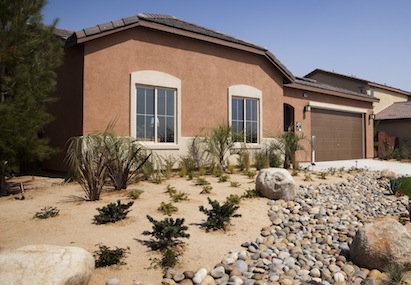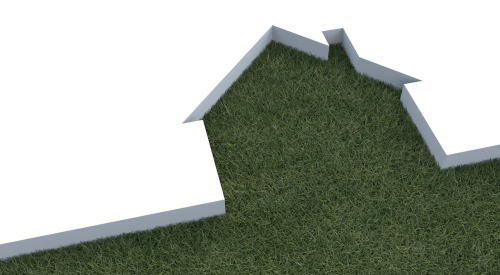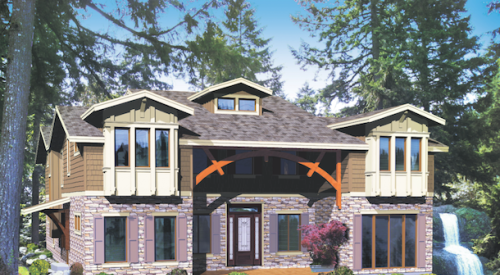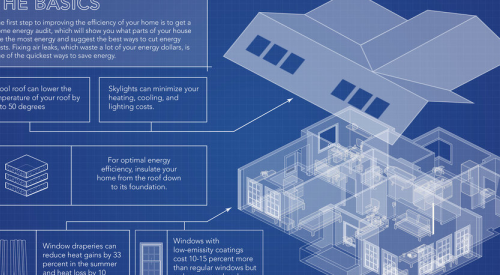There can be a number of perceived barriers to an uninitiated builder considering third-party green home certification. The first is usually the additional cost — there are the verification and certification fees, as well as the added cost of products and materials that may be required to achieve the level of certification you’re seeking. Another obstacle may be lack of understanding of the credible certification programs that are available and their requirements, and a perception that those requirements will be well above and beyond your current practices.
In reality, the cost to have a home certified at the Bronze level of the ICC 700-2008 National Green Building Standard (NGBS) has been shown to add less than 2 percent in construction costs, and many builders have been able to achieve Bronze at no additional cost. A lot of builders also find that once they look at the mandatory requirements for a Bronze-level certification and see the other optional practices available, they’re very close to building an entry-level green home already.
To help builders new to green building, the NAHB Research Center reviewed nearly 300 single-family projects certified to the NGBS Bronze level. Through that research, the Research Center was able to develop a “Bronze Cookbook” for the most commonly implemented (and readily available) products, materials, and practices used in Bronze-level certifications.
Below are some of the major areas of ICC 700-2008 that pose challenges for point accrual to new green builders and the steps they can take to overcome those challenges through optional practices. Using these optional “ingredients” in combination with the mandatory practices for each chapter, builders can likely earn enough points to achieve Bronze certification.
Site Preparation
1. Project management and accountability — Establish your project team, create a mission statement, and set specific and measurable goals for how the site will be developed. Make sure the key members of the project team take some basic training in natural resource protection. Courses like this can be found at local community colleges and through local and state government agencies. Also make sure there is on-site supervision during all clearing, grading, and trenching activities.
Mandatory NGBS Practices for Bronze-level Certification
• Foundation drainage for usable space is below grade
• Finished grade slopes 6 inches in 10 feet
• Use a water resistant barrier
• Install an ice barrier (if in an ice damn prone area)
• Determine HVAC load per Manual J
• Seal all duct systems
• Make sure that building cavities are not supply ducts
• Install all insulation per manufacturer’s instructions and local code
• Be sure all shafts are blocked/sealed
• Install an air barrier on the garage common wall and a gasket on the garage door
• Use structural plywood/OSB that meets PS1 or PS2 standards
• Do not install wall-to-wall carpet next to bath/shower and toilets
• Install spot ventilation in bathrooms
• Vent clothes dryers to the outside
• Install a radon system if in Zone 1 (also gets points)
• Use tile-backing material in wet or moisture-prone areas
• Install a capillary break under the slab
• Do not close up walls if insulation is wet
• Use duct insulation with a minimum of R-6 in unconditioned spaces
• Provide a homeowners’ manual with the green certification certificate, a list of the home’s green features, and major equipment manuals
2. Put it on the plan — Make sure the project limits for clearing and grading are indicated on the site plan so they don’t get overlooked or forgotten.
3. Establish boundaries — Install fencing or flags to protect trees and other vegetation on and around the site and to identify no-disturbance zones on and around the property. Also, stake out the limits of where clearing and grading will take place and install and maintain sediment controls where appropriate.
4. Reuse — Stockpile topsoil that is cleared from various areas around the site for later use in landscaping.
5. Alternative utility installation — To avoid more site disruption than necessary, look into alternative methods of installing utilities, such as tunneling, sharing trenches, or using low ground pressure equipment.
6. Select landscaping thoughtfully — Select regionally appropriate landscaping. Turf, shrubs, and trees selected should be native to the area and require the least amount of special care, maintenance, and watering. There are many web-based resources to help you identify native species, such as the Native Plant Information Network (www.wildflower.org/collections).
Resource Efficiency
7. Size matters — Try to keep the conditioned area of the home less than 2,500 square feet. Also, keep standard sizes/lengths of framing materials in mind in an effort to minimize material cuts and scrap material.
8. Prefab is fabulous — Use prefabricated components for your floor and roofing systems. Also, consider using products like windows and siding that don’t require any site finishing to eliminate excess waste.
9. Material selection — Select and install resource-efficient materials, such as engineered wood and trusses.
10. Keep it covered — Provide a covered entrance over the front door and use appropriate roof overhangs. In addition, install a drip edge.
11. It’s in the details — Don’t forget to include all flashing details on the home plans to avoid any confusion during the construction process.
12. Rain, rain go away — Make sure the combination of the gutters, downspouts, and site grading combine to carry water at least 5 feet away from the home’s foundation.
Energy Efficiency
13. Above code — Be sure the building envelope has a 10 percent UA improvement over the 2006 IECC.
14. Third-party verifications — Make sure an independent verifier has the access necessary to inspect your insulation, air sealing, duct installation, and window flashing and sealing.
15. Product selection — Select and install a heat pump that has 8.2 HSPF (11.5 EER) heating efficiency and 14.5 SEER (11.5 EER) cooling efficiency. Also, be sure to install an Energy Star-rated refrigerator and dishwasher.
Water Conservation
16. Less is more — Keep your hot water pipe runs less than 40 feet long.
17. Kitchen products — Select an Energy Star dishwasher to ensure efficient use of water and install a garbage disposal in the kitchen sink to minimize food waste going to a landfill.
18. Bathroom products — Make sure all showerheads are less than 2.5 gpm and bathroom faucets are less than 1.5 gpm.
Indoor Environmental Quality
19. Keep the bad stuff out — Don’t install air-handling equipment or return ducts in the garage to avoid introducing any car or chemical fumes into the living area of the home. During construction, be sure to cover all HVAC supply and return ducts to keep dust and debris from accumulating in the system and re-circulating.
20. Product selection — Be sure to use low-formaldehyde-emission insulation and duct insulation. Select a kitchen exhaust fan with 100 cfm. Install a carbon monoxide detector. And never install building materials with visible mold or water damage.
21. Steer clear — Avoid installing fireplaces or woodstoves. While they are permitted if they meet specific requirements in the standard, it is easier and less costly to avoid them altogether.
22. Attention to the attic — Make sure the attic access panel is gasketed and that penetrations through attic walls and floors are completely sealed.
Homeowner Education
23. Spread the word — Make sure to provide your homeowners with an owner’s manual that includes information on local recycling programs; local utilities that provide renewable energy; the benefits of CFL bulbs and other energy/resource-conserving products; practices that conserve water and energy; a home maintenance checklist; local service providers for equipment maintenance; common hazardous materials that should not be introduced into the home environment; and organic products (pest control, fertilizer, cleansers, etc.).
24. Training — Be sure your buyers/renters are familiarized with some basic green strategies such as regularly changing or cleaning HVAC filters; how to get the most out of a programmable thermostat, lighting, or fan controls in the home; and maintaining optimal water heater settings.
This is just a sampling of the optional practices that are available for implementation in a NGBS Bronze-level home. For more information on constructing and scoring a home to the National Green Building Standard, visit www.NAHBGreen.org/Certification. For a copy of the “Bronze Cookbook” created by the NAHB Research Center, use the contact form (www.NAHBGreen.org/ContactUs) on the website.
Created in 1964, the NAHB Research Center (www.nahbrc.com) is a full-service product commercialization company that strives to make housing more durable, affordable, and efficient. The Research Center provides public and private clients with an unrivaled depth of understanding of the housing industry and access to its business leaders.












